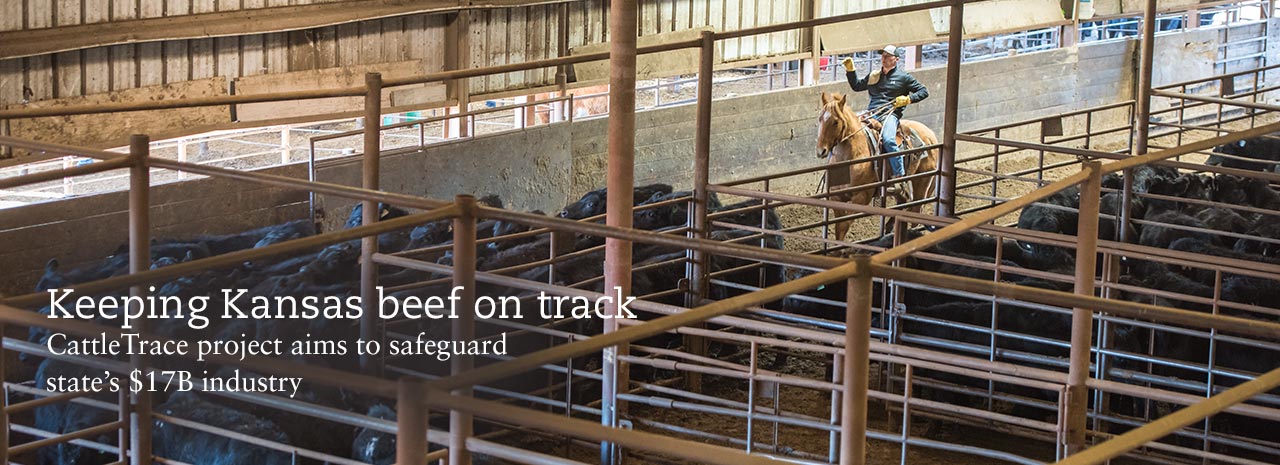Keeping Kansas beef on track: CattleTrace project aims to safeguard state’s $17B industry
By Pat Melgares
On a brisk December day, about 30 head of cattle arrive at Innovative Livestock Services Inc. near Great Bend, Kansas, moving methodically through a semitrailer, down a short ramp and into a feedlot pen.
As they make their way, the bright yellow tags attached to their right ears send signals through ultrahigh frequency chip readers to a computer located nearly 130 miles away in Manhattan, where a Kansas State University team and several Kansas groups are building an important safeguard for the state’s $17 billion cattle industry.
Their two-year pilot project, called CattleTrace, shows how the state’s beef industry may eventually track suspected animal diseases, and it could be a preview of things to come for the rest of the U.S. The U.S. is one of a few countries that does not have a national animal disease traceability system in place for beef cattle.
“We view CattleTrace as a risk management tool for the industry,” said Brandon Depenbusch, vice president of cattle operations at Innovative Livestock Services Inc. and a K-State graduate. “It’s important for all segments of the industry to have a tool such as CattleTrace to be able to track animals just in case of a disease outbreak.”
Addressing vulnerability
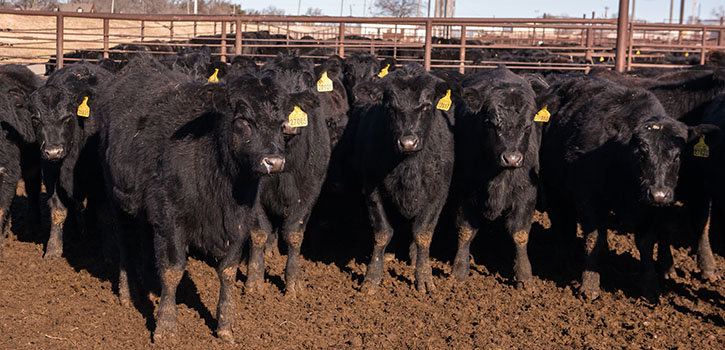
Industry officials point to the Kansas Livestock Association’s annual convention in late 2017 as a key driver for an animal traceability system in Kansas. At that meeting, the association passed a resolution in support of mandatory traceability for all classes of cattle in Kansas.
Two months later, as a result of its Beef Industry Long Range Plan, the National Cattlemen’s Beef Association released a feasibility study on a national animal identification and traceability system.
“Kansas has made traceability a huge part of what we do for the simple fact of our vulnerability,” said Justin Smith, the Kansas animal health commissioner and state veterinarian with the Kansas Department of Agriculture. “We tend to be an import state, meaning we get a lot of animals into the state of Kansas. Our attitude is that we are vulnerable to animal disease, and probably our risk is somewhat higher than the states that tend to produce the animals and ship them out of their states.”
Cassie Kniebel, the K-State project manager for CattleTrace, noted that traceability is not new in the cattle industry; for example, the U.S. government has passed legislation that requires disease traceability for breeding animals over the age of 18 months.
“But that doesn’t include feeder cattle, which are those cattle younger than 18 months,” Kniebel said. “If you look at the majority of cattle moving across the country at any given time, it’s those feeder animals.”
In Kansas alone, most of the 6.3 million cattle typically in the state are feeder cattle, including nearly 2.5 million cattle in feedlots, according to the U.S. Department of Agriculture. “Today, if you suspect a disease in a feeder animal, there have been traceability efforts that have happened over the past few years, and they have taken six months to two years to identify the problem,” Kniebel said. “That’s not ideal.”
Crucial response time
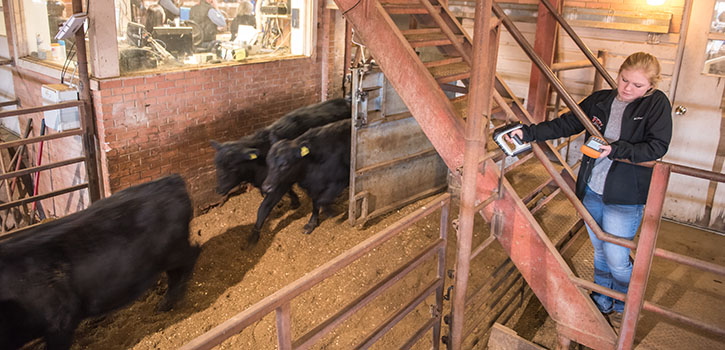
Indeed, a disease such as foot-and-mouth disease could spread so quickly through cattle herds that a delay of even a few days would be devastating, both in terms of loss of animals and export markets. Simply put, the emotional and economic damage wrought by animal disease would mount as each precious hour passed.
Kniebel said the tracing system Kansas is putting in place could allow animal health officials to trace a disease within minutes and narrow down where the suspect animals came from and which animals they may have interacted with or infected. Treatment and quarantine of those animals could begin immediately. Producers whose cattle are not affected could quickly resume normal operations.
“The key buzzword we use is speed of commerce,” Smith said. “We need to be able to gather that information but not impact how business is done.”
Thus, CattleTrace is a hands-free — and nearly maintenance-free — system. In the first eight months of the pilot project, officials have made available 55,000 ear tags equipped with ultrahigh frequency chips. As cattle move from farms to sale barns to feedlots and eventually to packing plants, they pass chip readers that can capture the signal and send it to a database managed by the CattleTrace team at K-State.
“I liken this to the K-TAG system that is common on the Kansas Turnpike,” Depenbusch said. “If you have a K-TAG in your car, you just drive right on through the toll booth and don’t have to stop. If you don’t have a K-TAG, you have to go through an alternate booth; that slows me down and slows the speed of commerce.
“What that allows us to do in the cattle industry is we can run multiple animals down an alleyway, a hundred at a time, and it catches all of those reads as the animals run through.”
Each pass sends a signal that places each animal at a given point in the production cycle. From the database in Manhattan, officials who are granted access can respond within minutes to any report of suspected animal disease.
“Data privacy is top of mind for many producers,” Kniebel said. “So we established CattleTrace Inc. as a private, nonprofit organization. CattleTrace Inc. has agreements in place with K-State for data management purposes, but a board of directors that includes producer representatives was named to determine the process for data access. This is an industry-driven program, and key decisions will be determined by the industry.”
Working together
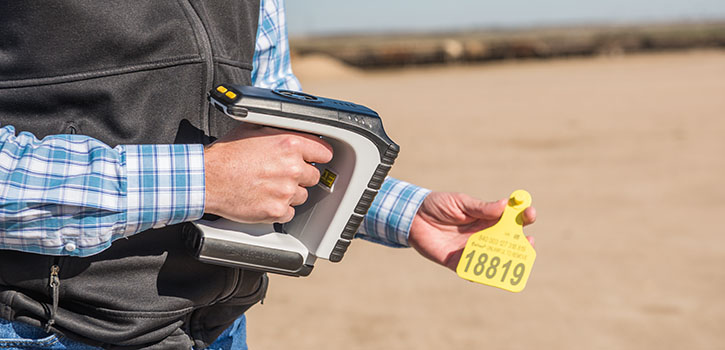
A little more than 10 years ago, U.S. producers were involved in efforts to establish the National Animal Identification System. Brad White, a K-State professor of production medicine and director of the Beef Cattle Institute, said that program never got much traction because multiple groups were unable to work together for a system that suited the entire industry.
“Whether you’re a producer, a veterinarian, an animal health official or a government agency, you all have different points of view,” White said. “And if it’s a program driven by any one of those groups, it’s going to struggle because the others don’t have the same motivations.”
Kniebel said CattleTrace is off to a promising start because all segments of the Kansas cattle industry are working together. The pilot project currently includes numerous producers, 14 feedlots, eight sale barns and all three major packers in Kansas. Kansas State University, the Kansas Department of Agriculture, the Kansas Livestock Association and private industry stakeholders are significantly supporting the project.
“I’m a great supporter of it,” said Clint Sturdy, a rancher near Lyndon, Kansas, who recently put CattleTrace ear tags on 85 heifers that he bought in Montana. “I want to participate when I can to help guide the development of the system. The industry needs a disease traceability program, and so I think this is a forefront program that we need to be behind.”
Kniebel said many other producers also are excited about CattleTrace.
“There’s still some folks who are a little hesitant about it and have questions, but we hope to answer some of those questions with this pilot project and provide a forum for them to have input into this system,” she said. “Because we want it to be industry-driven, we need everybody’s feedback whether they’re in support of it or not so that we can address industry concerns.”
Value-added opportunities
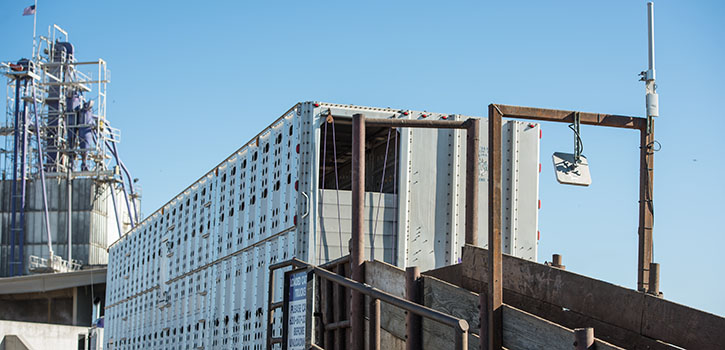
This spring, graduate and undergraduate students in K-State’s agricultural economics department are conducting research to determine what value a system such as CattleTrace provides to the state’s industry. Ted Schroeder, university distinguished professor of agricultural economics, is supervising the students, who are interviewing officials at feedlots and packing plants on the value of information that can be gathered from animal identification.
Schroeder’s colleague, Dustin Pendell, professor of agricultural economics, has been studying animal traceability for more than a dozen years. He said that in addition to quickly identifying disease and slowing its spread, animal traceability provides potential added benefits for the industry.
“If you’re a cow-calf producer, for example, you could use these electronic records in managing your operation,” he said. “If you’re selling your calves to a branded program, you have documentation and records on all the cattle.”
White said the current work to establish chip readers at feedlots, sale barns and packing plants is like building an interstate. As time goes on, companies and others will determine the best ways to build on-ramps — or value-added benefits — to the interstate.
“Once we set up and we have the structure in place to record information, there may be other systems that can use that same structure and gain more value, be they private systems in the industry, or others,” White said. “Building the infrastructure is critical.”
A national system
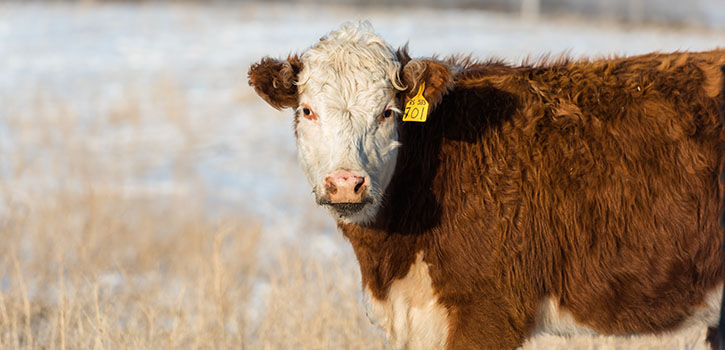
Smith noted that the eyes of the USDA are fixed on what Kansas finds out in the two-year CattleTrace trial.
“One of the goals of this project is to make it scalable and give something that maybe other states could look at and tweak it to make it work nationally,” he said.
The project also could scale nationwide as the U.S. looks at ways to create an animal disease traceability system that will help to market U.S. beef overseas.
“Other countries are using the fact that the U.S. doesn’t have a disease traceability system as leverage against us when they’re trying to do business with other countries,” Depenbusch said. “We need to take this disadvantage off the table; we need to make sure we have disease traceability so that can’t be used against us.
“CattleTrace won’t prevent our exports from going away if we have a disease outbreak, but we expect that it will allow us to come back and regain those exports quicker than if we didn’t have it.”

